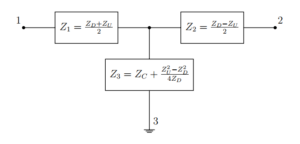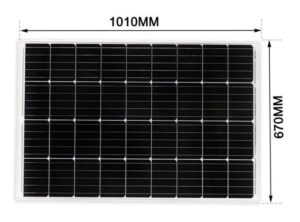In my recent article RG6/U with CCS centre conductor – shielded twin study I made the point that it is naive to rely upon most line loss calculators for estimating the loss of this cable type partly because of their inability to model the loss at low HF and partly because of the confidence one might have in commonly available product. In that article I relied upon measured data for a test line section.
I have been asked if the nanoVNA could be bought to bear on the problem of measuring actual matched line loss (MLL). This article describes one method.
The nanoVNA has been OSL calibrated from 1-299MHz, and a 35m section of good RG6 quad shield CCS cable connected to Port 1 (Ch0 in nanoVNA speak).
A sweep was made from 1-30MHz with the far end open and shorted and the sweeps saved as .s1p files.
Above is a screenshot of one of the sweeps. Continue reading nanoVNA – RG6/U with CCS centre conductor MLL measurement










